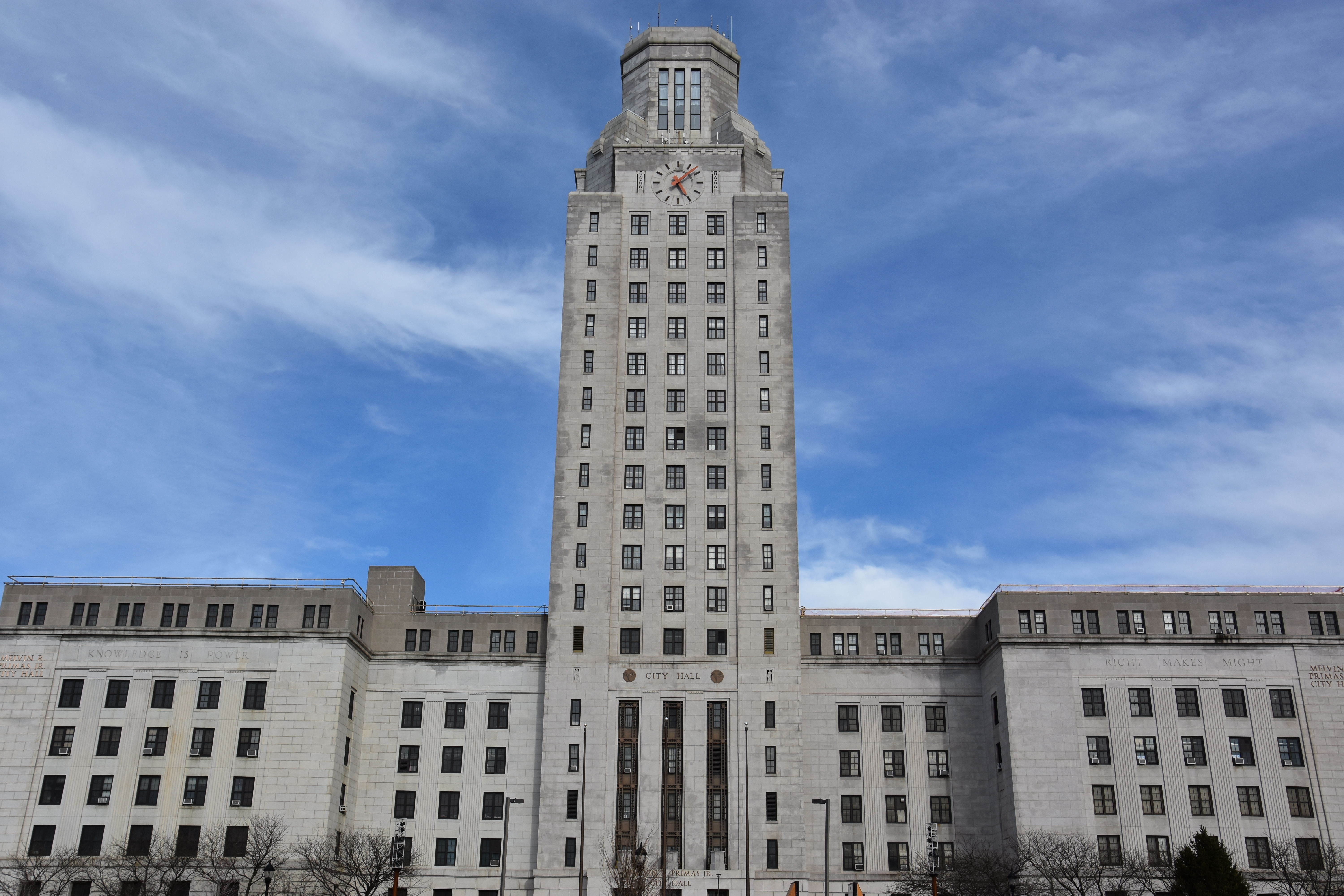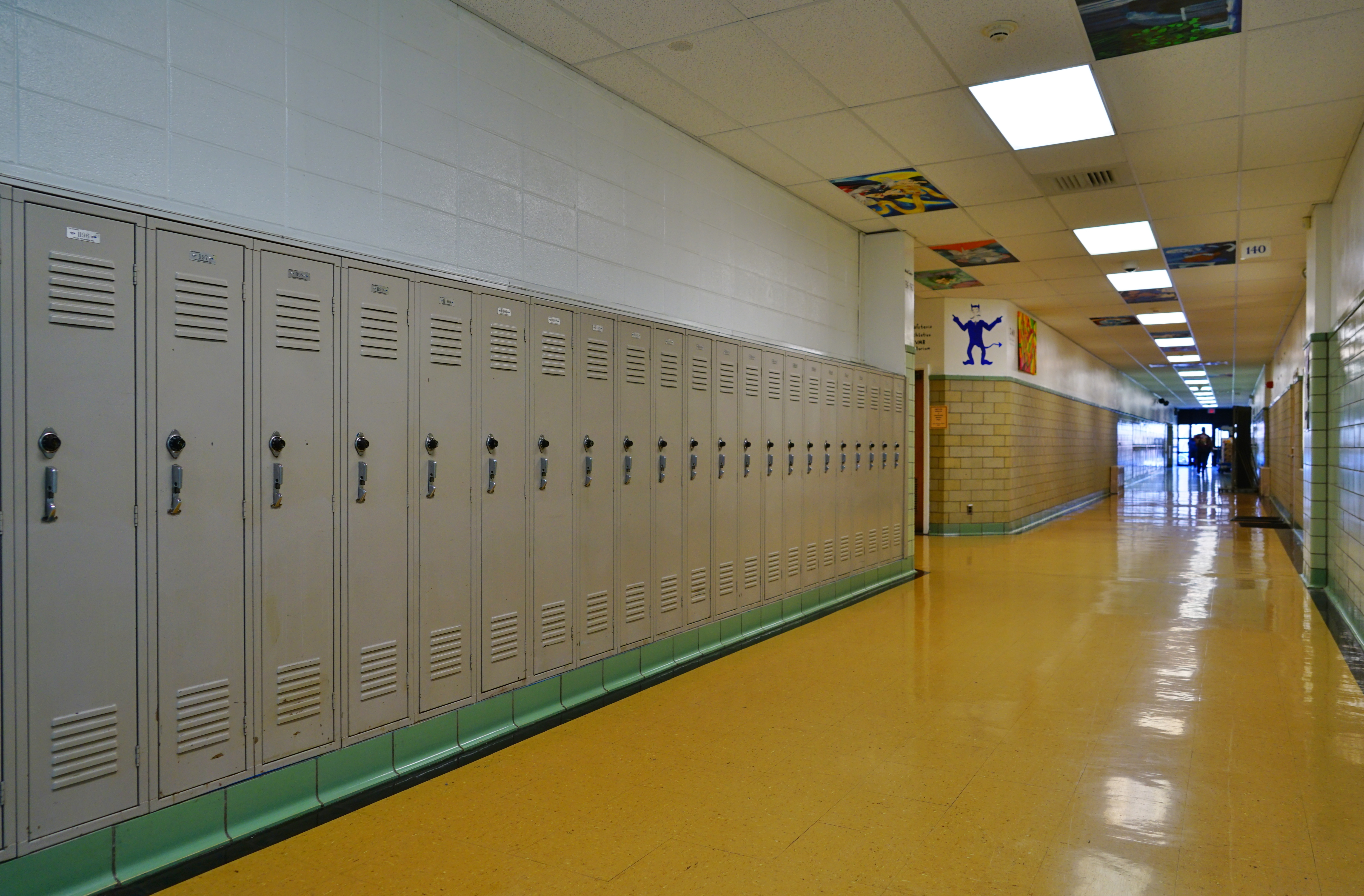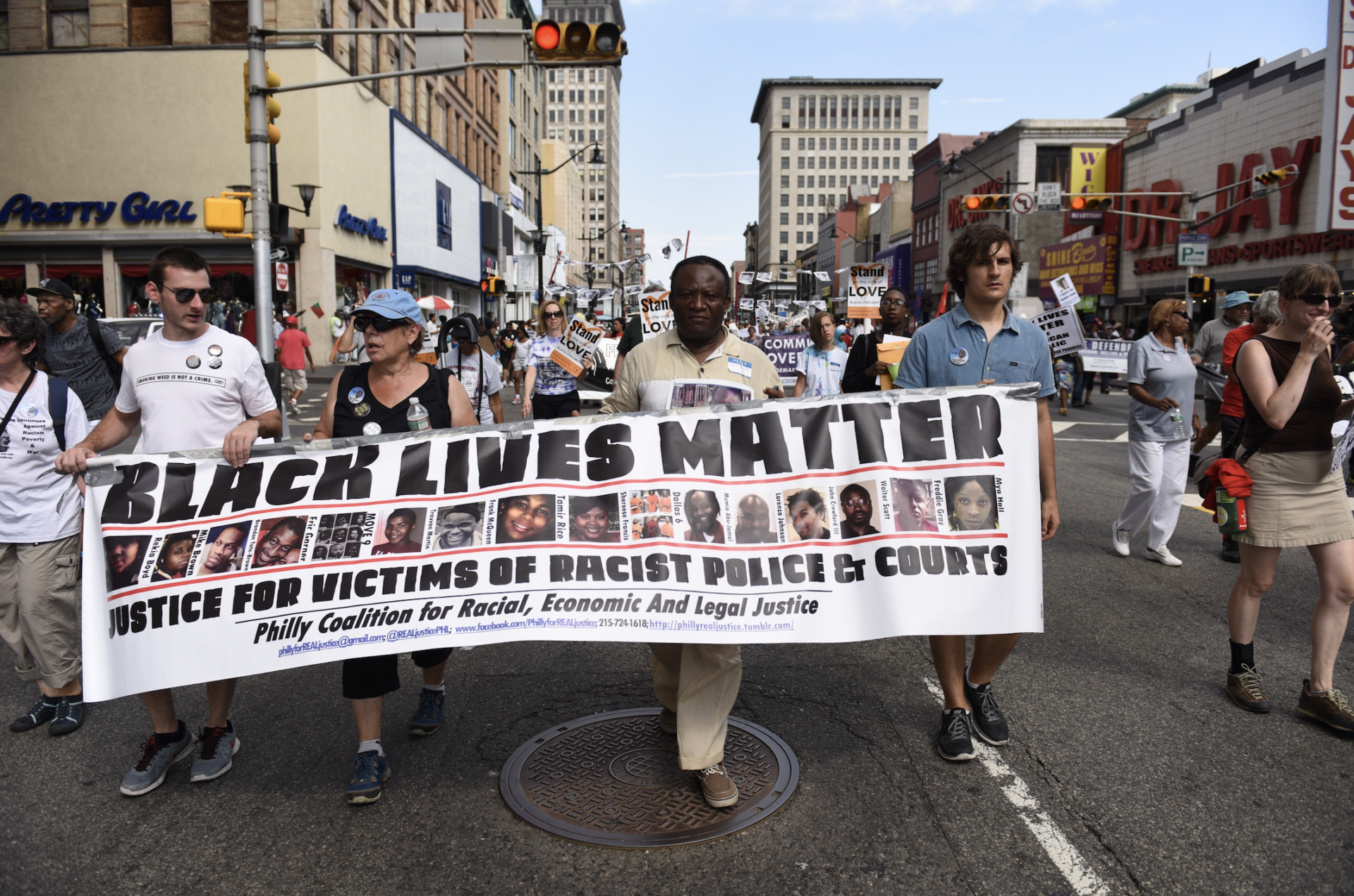How is the State of New Jersey and its municipalities allocating resources to its services and citizens? How are these governance decisions being factored into credit risk? This Fiscal Justice Analysis is the intersection of a racial justice and fiscal health analysis—and where New Jersey ranks within it.
Introduction
As New Jersey’s state and local governments prepare for an unprecedented infusion of resources through The American Rescue Plan, communities have a unique and limited opportunity to reimagine the state’s inherently unequal systems and institutions that finance the public sector. Consider these New Jersey justice stats:
• #1 in the nation for racial disparities in incarceration
• #3 in the nation for highest median household income
• #5 for most actively traded municipal bonds
• #8 in the nation for the most tax breaks
New Jersey’s state and local government credit ratings serve as a core component of the state’s public finance architecture by informing investors of the potential risk they stand to incur by purchasing a local government’s bonds. These ratings also enable some of the most inequitable practices in the municipal market. Municipal revenues serve as the supply lines to fueling state sanctioned, taxpayer-funded racial oppression. U.S. cities annually lose $70 billion in corporate tax giveaways, $11 billion from exclusionary school discipline policies, and $1.6 billion for municipal settlements, while bringing in $7.2 billion in predatory revenue from excessive fines and fees — all disproportionately harming BIPOC communities.
Credit ratings cast a long and permanent shadow on New Jersey’s BIPOC communities by relying on characteristics and inputs that reflect preexisting discrimination or disparities from racist policies such as redlining and compelling the adherence to neoliberal behavior in the future. Without interrogating and reimaging municipal credit ratings, we will further cement disparate racialized outcomes in communities across the country.
Often credit rating agencies do not take into account social justice issues within a municipality and how those materialize in credit risk. In response, Activest has analyzed municipal credit ratings in New Jersey based on a fiscal justice methodology, which is our intersectional approach to fiscal health and racial justice. Read the report below where we lay the foundation to better quantify New Jersey’s racial justice risks in municipal budgets, policy, and decision-making.
In this report, you’ll find a Fiscal Justice Analysis of:
- Credit Rating
- Governance
- Education
- Economic Development
- Health
- Policing
- Income Disparities

Credit Analysis Overview
Moody’s Credit Ratings by City
The average City rating is Aa3. Amongst the cities we analyzed, the only city at or above average credit rating is South Orange, NJ.
- Newark NJ – Baa2
- East Orange NJ – A2
- South Orange NJ – Aa2/ S&P AA-
- City of Camden NJ – S&P A-
- Upgraded from BBB- by Fitch
- Was BA2 by Moodys until coverage stopped
- City of Trenton NJ – Baa1
Areas of social risk from existing state and local credit rating reports that could be added or are incorrect.
- The carrying cost for long-term liabilities is well above the U.S. state median driven by high debt and the accumulated effects of weak pension contribution practices.
- The state’s long-term liability burden is elevated and well above that of most U.S. states, reflecting its considerable outstanding debt and large net pension liabilities.
- The burden has declined in recent years, in step with pension contribution increases, but future capital needs and continued pension demands will likely keep this ratio at a comparatively high level. The state’s other post-employment benefits (OPEB) liability is significant but has fallen considerably given state action to trim benefit costs.
- Operating Performance: Gap-closing capacity has been strengthened as the state’s recovery progresses, although operating performance would likely be more challenged in a downturn given somewhat constrained expenditure flexibility. Reduced reliance on non-recurring actions and higher operating balances further support strengthened budget management.
Rating Sensitivities
- Further budgetary management improvements that prioritize stronger fiscal reserves and minimize reliance on one-time resources.
- Significant increased reliance on non-structural budget solutions, or difficulty absorbing the budgetary impact of expiring federal pandemic assistance;
- Evidence that New Jersey’s ability over time to support high carrying costs within its budgetary framework, including continuously making full actuarial pension contributions, is straining its operating performance;
- A significant weakening or delay in the economic recovery from the pandemic that leads to revenue growth consistently below inflation.
Additional Notes for Consideration
- Under the Coronavirus Aid, Relief and Economic Security Act enacted in March 2020, New Jersey and its eligible local governments received $3.44 billion from the CRF, with the state allocating its $2.4 billion portion for a range of eligible operating costs in education, social services and for staffing needs.
- Under the ARPA, enacted in March 2021, New Jersey’s state and municipal governments are receiving $9.8 billion in direct aid from the Coronavirus State and Local Fiscal Recovery Fund
- The state’s labor market situation has been weaker than the national average, despite considerable improvement through the first half of 2021. At the start of the pandemic, non-farm payroll declined more sharply in New Jersey than in the nation as a whole (-17% from February 2020 to April 2020 in New Jersey, vs. -15% nationally). The state’s recovery in jobs since April 2020 (59% of jobs regained through February 2021) likewise remains below the nation’s 70% recovery.
- New Jersey’s official monthly unemployment rate of 3.9% in June remains higher than the national 3.6% rate for that month.
- Additionally, the Fitch-adjusted unemployment rate, which adds back estimated labor force exits, was 10.5% in June, above the states median Fitch-adjusted unemployment rate of 6.7% (U.S. States Labor Markets Tracker, published July 2021.
- Job losses in New Jersey, as in other states, have disproportionately affected lower wage workers, and the job recovery for these workers has been particularly slow.
- $1.1 billion will come from net lottery proceeds on a monthly basis based on the 2017 state Lottery Enterprise Contribution Act (LECA), which redirect lottery net revenues to the pension systems.
- Most revenues are collected in the state’s two primary operating funds, the general fund and the property tax relief fund (PTRF). The personal income tax (PIT) is deposited to the PTRF and is the largest source for supporting operations, at 43% of fiscal 2020 operating revenues. As part of the fiscal 2021 enacted budget, the state extended the 10.75% marginal top rate on taxable income above $5 million down to $1 million. The change was forecast to generate $514 million in fiscal 2021 as of the fiscal 2022 executive budget.
- Sales tax provides the next largest share at 28% operating funds.
- Education is by far the larger line item, as the state provides significant funding for local school districts and the public university and college system. Health and human service spending is the second largest line item, with Medicaid being the primary driver.
- Long-term direct debt as of June 30, 2020, and including the $4.3 billion of GO emergency bonds issued in November 2020, totals $44.1 billion, equal to 6.5% of 2020 personal income.
- Fitch’s figure also includes $2.7 billion in GARVEEs and $2.9 billion in tobacco settlement asset-backed bonds.
- In recent years the state had begun tackling key issues such as transportation infrastructure funding, transit operations, employee and retiree health benefits, and as noted above, embarked on a multi-year phased increase in pension contributions to the actuarial level. Transportation funding changes enabled progress on road and rail safety, although transit issues remain significant and unmet needs include repairs to aging infrastructure, most notably the $11.6 billion Gateway Tunnel project.
- Pension Liabilities Remain Dominant Long-Term Challenge
- As of the June 30, 2021 measurement date, the state estimates that plan assets will cover 49% of liabilities in aggregate.
- During the long economic expansion that ended with the pandemic, budgetary management in New Jersey was hampered by a delayed economic recovery and by longstanding practices that weakened operating performance. These included aggressive revenue forecasting, a reliance on non-structural actions and a contentious decision-making environment.

Scope of the Problem
Overview
Throughout New Jersey, we’ve observed variance in use of debt as a vehicle. Black cities have been shown to pay a premium to access capital and are having to use it to cover more needs and expenses than their white counterparts ex. upkeeping older infrastructure. With a lower overhead and more private funding available, white cities have more latitude to invest in items with positive returns. We argue that the legal requirement to establish parity needs to more greatly recognize the historical disparities Black cities and school districts are facing, from access to capital to the need for it, and provide more public funding for these municipalities.
For example, proportionally, South Orange spends less per pupil in its public schools and less on public works, policing and libraries than its neighbor Newark. Yet, the school district ranks higher, home values are higher and neighborhoods are safer than Newark’s. We recognize that private ownership and wealth fills this gap.
Even after decades of private corporate investment in inner cities, the health and educational outcomes that personal income and property tax investment has materialized in suburban places like South Orange has yet to be seen in cities like Newark. These private dollars have subsidized schools via PTAs and subsidized public works and parks & recreation through HOA fees or housing a private university. In addition, the ease of access to capital through debt facilitates investment in areas of positive return.
Similarly at the state level we see a variance in choices to address, or not, income disparities or education outcomes—and these are trickling down to municipalities. This becomes magnified when localized depending on what’s happening on the ground. The state is setting a poor precedent to alleviating disparities by continuing abatement giveaways and other extractive measures that realize themselves in local communities.
| Metric | Newark | South Orange |
| Population | 281,000 | 17,000 |
| Poverty Rate | 27% | 7.6% |
| Debt | $562,524,758 | $157,730,882 |
| Debt per capita | $1,805 | $3,404 |
| Tax Revenue | $447,168,123 | $92,032,571 |
| Median Household Income | $37,476 | $136,067 |
| Spending per pupil | $20,546 | $20,046 |
| Total School District Debt per capita | $3,593 | $9,393 |
Key Issues
Governance
As we consider other fiscal justice issue areas and indicators, it must be recognized that local administrators have the power to decide how public funds are allocated—and can choose to invest more in education than public safety, for example. Across the state, we have seen a spectrum of spending allocation styles, as demonstrated in the example below.
To this point we have seen the lack of usage of tax abatement by wealthy communities as the optimal way to drive taxbase growth while Black community leaders are using corporate subsidies as one of their key drivers for economic development—though tax abatements have been proven to be extractive from communities. Additionally, wealthy white neighborhoods are not being policed like in urban areas and yet South Orange is considered safer than Newark—which allows wealthy communities to spend more on public education.
| Spending relative to municipal tax revenue | Newark | South Orange |
| Public works | 12.83% | 3.30% |
| Libraries | 2.36% | 1.22% |
| Parks & Grounds | 0.46% | 1.22% |
| School District Expenditures | 24% | 113% |
| Public Safety | 29% | 12% |
Comprehensive Annual Financial Report (CAFR)
| City | Population | Year | County Health Rankings – Outcomes |
Tax Revenues | Revenue & Other Income | Current Fund Balance |
| Newark NJ | 311,549 | 2019 | 17 | $447,168,123 | $947,351,963 | $62,796,982 |
| East Orange NJ | 68,903 | 2020 | 16 | $127,281,719 | $200,608,070 | $10,500,000 |
| South Orange NJ | 18,484 | 2020 | 16 | $92,032,572 | $107,361,079 | $3,558,399 |
| Camden, NJ | 71,773 | 2019 | 20 | $29,013,518 | $208,727,842 | $73,046,030 |
| Trenton, NJ | 83,387 | 2020 | 10 | $123,900,511 | $239,578,933 | $13,871,994 |
| Key Cities – Expenditures | ||||
| City | Expenditures | Public Safety | Police | Police (%) |
| Newark NJ | $929,329,756 | $226,071,160 | $154,625,080 | 16.64% |
| East Orange NJ | $191,773,941 | $42,253,587 | $24,237,440 | 19.04% |
| South Orange NJ | $104,413,825 | $11,053,290 | $6,952,660 | 6.66% |
| Camden, NJ | $195,064,990 | $22,623,533 | $71,091,059 | 36.4%% |
| Trenton, NJ | $253,327,178 | $61,234,989 | $33,478,332 | 27.02% |
| Key Cities – Debt | ||||
| City | Debt Service | Total Debt | Debt per Capita | Credit Rating |
| Newark NJ | $63,389,788 | $562,524,758 | $1,806 | Baa2 |
| East Orange NJ | $175,000 | $66,121,957 | $1,027 | A2 |
| South Orange NJ | $5,154,590 | $157,730,882 | $3,405 | Aa2 |
| Camden, NJ | $2,783,025 | $40,525,116 | $550 | A- |
| Trenton, NJ | $25,396,393 | $400,403,396 | $4,802 | Baa1 |
Education

School Debt
While NJ spends 54.5% of its state budget on public education, returns on this investment are not being seen equitably amongst NJ students due to funding disparities along racial and income lines. Consequently, NJ has been found to be one of the most segregated school districts in the country. The economic development policies, mentioned below in the ‘Economic Development’ section, have hindered lower income workers’ socioeconomic mobility—keeping them in racially-divided, low-income neighborhoods that often have low-performing public schools because they are funded primarily by this impoverished taxbase.
Although corporate tax abatements are intended to bring in high income earners and a larger tax base to lower-income communities, these earners often don’t live in the neighborhoods where they work. This double-edged sword results in the state not collecting all the potential taxes it can from companies, additionally these workers are not putting money back into the system as intended—leaving schools & students shortchanged and saddled with a heavier reliance on state subsidies.
Because of South Orange’s wealth, although there is less need to raise funds for public spending, because of their higher credit rating, it’s cheaper and easier (lower interest) to access capital to allocate to the school district—thus why they rank top 3 on the ‘total debt per pupil’ graph above. Newark actually spends more per pupil, however, its graduation rate is 10% lower than Essex County neighbor, South Orange. Newark isn’t seeing the returns of its investment materialize into student outcomes.
Current Issues: New Jersey School Desegregation Case
There are 564 Municipal Districts and 612 School Districts in the State of NJ. Throughout the state, the school district culture was designed to be “provincial” and only take care of itself. By creating decentralized systems, students only benefit from resources already in the community which they lack. Therefore, the State is obligated to establish parity between school districts. However, due to historical, systemic racism, communities of color are being deprived of needed resources because the State is not accounting for the additional expenses required to establish parity after decades of disparate resource allocation.
According to Gothamist.com, “The suit, filed four years ago in Mercer County by a coalition of nonprofits long immersed in education equity issues, contends that nearly half of the state’s Black and Latino students attend public schools that are 90% non-white, in violation of the state constitution’s ban on segregated schools.” Advocates are calling out not only the funding disparities that result from ‘neighborhood schools’ but also how the lack of diverse perspectives in the classroom can stifle development.
Meanwhile, municipalities like South Orange and Maplewood are different yet they share a school system—because they share an income identity. Together, they borrowed $64M in 2021 out of $95M total debt. They used their shared borrowing capacity to pull more resources into their already thriving communities—solely to invest in public education.
Health
Because New Jersey has not invested in its Black/Brown residents, as mentioned in the economic development and income disparity sections, low-wage workers lack socioeconomic mobility to obtain higher wage jobs that offer private insurance—in turn placing a greater strain on public services such as Medicaid and Medicare. Similarly, since they lack discretionary income or time off or childcare flexibility to use preventive care, a further burden is placed on emergency services which are charged at a higher rate than primary care or urgent care services—with the taxpayer carrying these additional fees.
In general, organizations with broader operating footprints and financial resources outperformed smaller, independent ones, widening the credit gap. This means that community-based hospitals are being overwhelmed by patient demands without increased financial support.
Additionally, increased insistences of homelessness and joblessness caused by a local labor force that has not been trained for incoming economic opportunities because of poorly funded schools—as well as the selection of extractive business in Black/Brown neighborhoods such as liquor stores—places an emotional and physical toll on residents which manifest in increased use of alcohol and drugs which require additional healthcare dollars.
Other environmental factors such as proximity to industry, lack of access to greenspaces or length of commute due to displacement which results in higher transportation costs and less hours of sleep on an already strained body.
State of New Jersey Public Health Metrics
- Essex County #17 out of 21 counties for health outcomes, neighboring Morris County is #1
- Maternal mortality rate: 20 deaths per 100,000
- Top 5 worst offenders by state for infant mortality in the US (U.S.: 6.0 infant deaths per 1,000 live births; NJ: 4.5 infant deaths per 1,000 live births in 2019)
County Health Outcome Rank (by quartile):
- Trenton County: 2nd
- Camden County: 4th
- Essex County: 3rd
Economic Development
New Jersey is increasing abatements year-over-year and they have become a key mechanism for municipalities to grow—yet are extractive to the longstanding communities they are in. Corporate subsidies are intended to increase tax base and future tax revenue, such as occupational and property taxes, through attracting new businesses and their high-income workers to the area. Instead, they actually result in a decrease in the availability of funds for essential services such as public education, libraries, parks, etc. because the state is forgoing corporate or property tax revenue per the incentive. These economic development solutions to the state’s issues of divestment and extraction from Black/Brown residents neither solves the root cause of such divestment nor serves the needs of the community at large—but rather doubles the strain on public resources while receiving half the support.
Key insights:
- Increasing economic abatements over the past four years.
- Economic abatement figures 10x since 2016 as a new tool for attracting private industry.
- New Jersey has done a report showing economic abatements cost School Districts millions of dollars.
New Jersey Abatement Giveaways
- State Abatements
| Year | Abatements Given Away |
| 2020 | $396,265,000 |
| 2019 | $308,336,000 |
| 2018 | $358,740,000 |
- City Abatements
| City | Abatements | PILOT |
| Newark NJ | $37,663,904 | Info unavailable |
| East Orange NJ | $13,101,033 | $4,815,941 |
| South Orange NJ | $2,536,864 | $2,280,000 |
| Camden, NJ | $39,582,000 | $969,800 |
| Trenton, NJ | $8,238,490 | $3,000,000 |
Public Safety

Public safety budgets include Division of Police, major settlements and spending on policing community protests. Even though many of these protests demanded cities spend less on public safety, New Jersey and its townships have continued to increase this spending disproportionately to other issue areas like public works.
Police brutality settlements are a financial risk associated with biased and aggressive policing. With municipalities often paying out hundreds of thousands, annually—in turn diverting money away from investments in education, workforce development, and other social services. Additionally, through over-policing and over-incarceration, cities and the state are overtaxing Black residents in the form of nuisance tickets, civil forfeiture, no-knock warrants or probation fines & fees. The state’s reliance on these fees is a risk for municipal bondholders as they are non-recurring nor encourage productivity. Consequently, low-income, over-policed Black and Brown residents are being subjected to financing inadequate services that do not meet their needs.
Instead of listening to the demands of the community who may be pushing for decreased police spending and an increase in spending on public services such as schools and libraries, New Jersey has chosen to deny these demands and increase public safety spending which does not help close the racial income disparity. We recommend ending disproportionate public safety spending to focus on funding indicators proven to make communities wealthier and safer such as education.
State of New Jersey Public Safety Spending Metrics
Police spending (% of GF, compared nationally, per resident spend)
- #15 in the country in 2019
- $656 per capita
- 5.17% of budget
- $5,831,000,000 in 2019
Current Issues
Income Disparity
Income inequality erodes local tax revenues. A large portion of the state’s income comes from occupational, or personal income, taxes collected from working residents, which totaled $16.6B million in 2020. Across New Jersey, tax revenues from occupational taxes should be higher by $2.1B. However, due to underinvestment over time, the state’s Black and Brown population is unemployed or underemployed, underpaid, and have fewer opportunities. Because of inequitable support of school districts in Black/Brown communities, New Jersey has produced an undertrained and thus underpaid workforce that perpetuates income disparity along racial lines. Lower income for Black and Latinx residents translates to lower tax revenue and reduced business investment for the city. New Jersey has either neglected to address these gaps or, in many cases, invested resources in ways that exacerbate its disparities.
The increasing income inequality creates greater financial vulnerability for the state as a whole. Displacing lower-income earners and creating incentives for higher-income earners to move in is a common path cities take to increase tax revenues. However, it is debatable whether this strategy actually leads to increased revenues. It is not unjust for current residents—but creates many unnecessary social and financial risks. The mechanisms that often facilitate the displacement and replacement of residents can squander tax dollars.
State of New Jersey Income Disparity Metrics
- $25,085 difference between White median income and Black Median income in 2019
- Occupational Tax foregone $2B in 2020
Current Issues
Newark Guaranteed Income Program
Conclusion

New Jersey’s history of white flight, leading to segregation which perpetuated the inequitable distribution of public resources, has shaped the wide spectrum of governance styles, spending allocations and municipality priorities as demonstrated in this small sample size. Moreover, Black cities are paying more to access capital and are asked to do more with it than their white neighbors who can use debt as a vehicle for growth versus a vehicle for maintenance. At the same time, grassroots organizing throughout the nation sparked renewed energy and commitment to intensify the movement to end racism.
The next front in that movement is the growing awareness that the financial markets, regulators, bondholders, and investors—all of whom have stealthily foot the bill for systemic racism—are key to helping us understand how systemic racism functions in contemporary municipal finance. These financial stakeholders are also in the unique position to point us in new directions toward dismantling the inequities, segregation, and oppression that harm communities of color and the broader State of New Jersey. Residents and bondholders should feel empowered to reach out to and demand change from their municipal leaders to drive spending allocations that will lead towards a more equitable and fiscally just New Jersey.
Special thanks to the Robert Wood Johnson Foundation whose grant funding supported this report.
The post New Jersey Fiscal Justice Credit Analysis appeared first on Activest.
